It’s not easy to make the sun go away. Aside from limited cloud cover, we only experience solar eclipses on a very infrequent basis. And there’s no sinister Mr. Burns out there making a sun blocking device that keeps us in eternal shade. That said, there have been a handful of times in history when something filled the sky and blotted the sun from existence, if only for a few dramatic moments.
10. Passenger Pigeons

The largest flock of birds ever reported to be caught on camera happened over the African savanna in 2009. A photographer managed to capture about 1.5 billion red-billed quelea look like something out of a horror movie, filling the air and also covering everything in guana. It’s remarkable to watch, but it still pales to what passenger pigeons once did.
In the 1800s, there was no bird more abundant in North America than the passenger pigeon. In the year 1813, John James Audubon, the famous artist and ornithologist, watched as a flock of pigeons approached and blocked the sun from the sky. It took three days for them to pass. At the same time, ornithologist Alexander Wilson calculated the flock he saw to have in the neighborhood of 2.3 billion members.
In the year 1860, the people of Toronto lost the sun as a flock of an estimated 3.5 billion birds took 14 hours to pass by. When the birds landed on trees, the weight of them all would break off the branches and destroy them. People compared it to tornado damage.
Amazingly, this once abundant bird went extinct by the early 1900s. Logging, the invention of the rail system and hunting all contributed to the ease with which the animals were destroyed. With their habitats destroyed and people actively hunting and selling the birds, they were not able to keep up with the changes in the world around them and were killed off as a result.
9. Smog
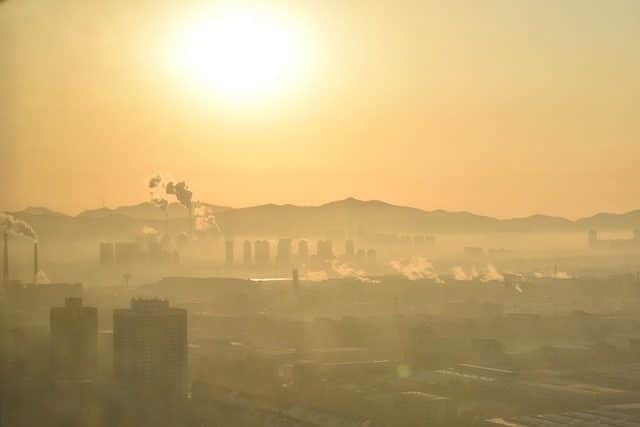
The concept of smog dates back to the turn of the last century and was used to describe the haze of smoky fog over towns in Britain as a result of the heavily polluting industrial areas at the time. Since then, many large cities with heavily industrialized sectors have suffered the same fate.
China is notorious for poor air quality owing in no small part to the country’s heavy burning of coal. In 2019, it was revealed that solar energy production in China had fallen between 11% and 15% because the thick smog was actually blocking the sun from reaching solar panels. At the end of 2016, cities like Beijing endured a stretch of eight full days with pollution levels so high that the sky was gray and blocking the sun.
The problem in Beijing had been ongoing for years, and in 2014, the city implemented strategies to combat it. It wasn’t until 2021 when Beijing was finally able to meet their own state-determined limits on air pollution for the first time ever, in anticipation of the Olympic Games.
8. Wildfires

Wildfires have become far too commonplace these days, and when summer rolls around, you can almost guarantee more are going to plague some sections of the United States, probably in California. The damage they cause is astronomical. At least 30 people died in the 2020 fires. One hundred and six died in 2018. The economic totals were also hard to imagine, with the 2018 cost estimated at around $400 billion.
Such destructive fires have wide reaching side effects, so it’s no wonder that they would create such a massive wall of smoke that the sky itself would go black. The fires in 2020 blocked the sun from San Francisco and left the city with a hazy glow in the sky. The same thing occurred in 2018, blocking the sun in British Columbia.
7. Mosquito Clouds
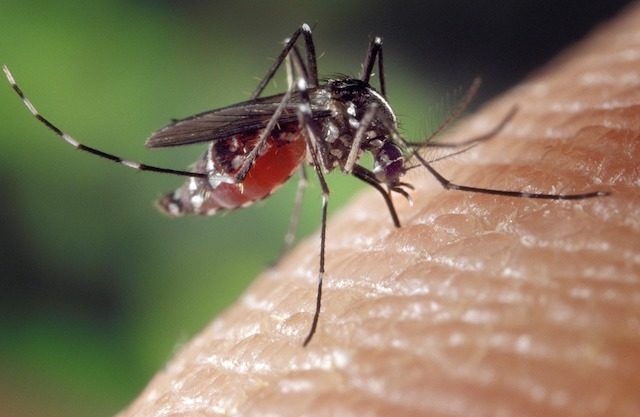
In 2018, mosquitoes killed about 830,000 people. That was a drop in previous numbers which averaged around two million a year. And even if they’re not bringing diseases like malaria, no one likes mosquitoes at the best of times because they’re annoying. So imagine how distressing it would be to discover a cloud of them so massive they can hide the sun from sight.
In July 2021, a mosquito swarm in Russia formed into a swirling cloud like a tornado that darkened the sky. The pillar-like swarms are made up of millions of male mosquitoes who are all vying for the attention of a much smaller population of females. It’s actually a fairly common phenomenon and the size of the swarms can vary based on weather conditions from year to year.
6. Geoengineering
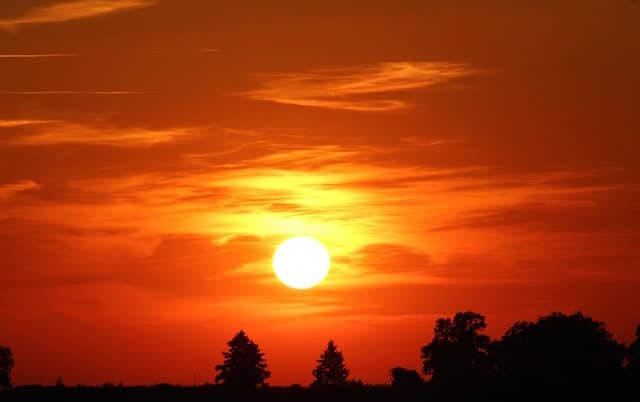
The term “global warming” was first used back in 1975. “Climate change” actually dates back to 1956. So these concepts are not new to us by any means. Plans to solve these problems have existed just as long and one that has been proposed is geoengineering. To some, this is about as close to Mr. Burns level evil as you can get.
The purpose of geoengineering in regard to the sun is to block the sun in an effort to cool the earth down. The Stratospheric Controlled Perturbation Experiment was supposed to take place in 2019 and was going to see calcium carbonate, the basic ingredient in antacids, into the atmosphere. The hope was that the particulate matter would reflect some of the sun’s light and help cool the earth. That experiment was canceled. It got picked up again in 2021 by Bill Gates. Naturally, headlines about a billionaire planning to block out the sun were met with some skepticism and blowback. The experiment was paused once more. Critics fear that there is not enough evidence about what could potentially go wrong with weather patterns and other issues if we go ahead with such an experiment.
The project has not officially been undertaken yet, but it seems like it’s only a matter of time before someone goes ahead with it. And when they do, for better or worse, we’ll find out what happens when man tries to artificially block the sun from the sky.
5. Sandstorms
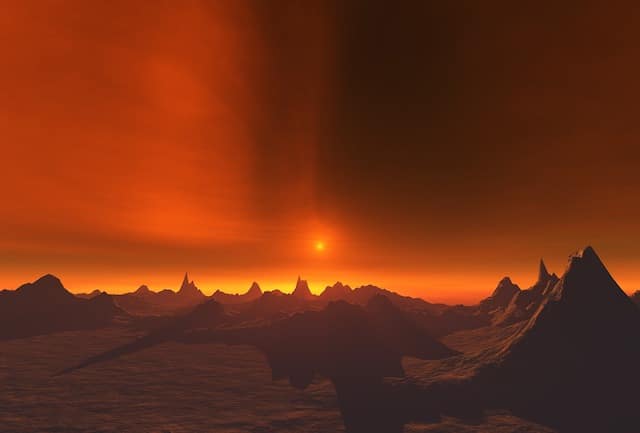
Those of us who don’t live in arid regions will never truly understand the power and scope of a dust storm. You can go to YouTube and watch videos of them but, as with many such things, it’s not really the same. A video can’t really make you feel the awe when a wall of dust manages to block the entire sun.
Cairo routinely suffers dust storms with winds reaching around 50 km/h or more, and waves of dust rising up to around 5 meters in height. The sky becomes blocked by a gray wall until the storm passes.
America has also endured some severe dust storms, in particular during the infamous Dust Bowl. A serious drought began in 1931 that lasted for years. Dry topsoil would get picked up in storms and create what they called black blizzards.
On April 14, 1935, after a particularly brutal summer the prior year, the layers of dried soil were thick. When a severe weather front rolled in from the north, the ensuing storm was unlike any the people there had seen. A dust storm hundreds of miles wide and thousands of feet high was produced. It displaced 300,000 tons of soil. They called it Black Sunday. One witness to the event said you couldn’t even see your own hand before your face, let alone the sun in the sky.
4. The Mystery Thing

When you talk about things blotting out the sun, it’s a given that we mean our sun. But in the universe at large, our sun is just one of many. And it’s not the only one that vanishes for strange reasons.
In 2012, astronomers observed a star now known as VVV-WIT-08. The “WIT” part stands for “what is this?” For 200 days, the star disappeared. Something blocked its light entirely. And then it returned. So, for 200 days, something was in the way. It has never happened since and, in all the years since it happened, researchers have not been able to determine what caused it.
The star is about 25,000 light years away. It’s also 100 times larger than our sun, but burns cooler and not as bright. The data collected suggested an opaque object blocked the star for those 200 days. That means, whatever it was, was bigger than the star but solid. Not a lot of stellar bodies can meet those parameters.
Further research raised more questions. The star’s true size and distance were hard to analyze. But they concluded that whatever blocked it must be in orbit around the star. It’s just that none of their guesses, including black holes, planets or other stars, accurately explain the observations.
3. Arrows, Maybe
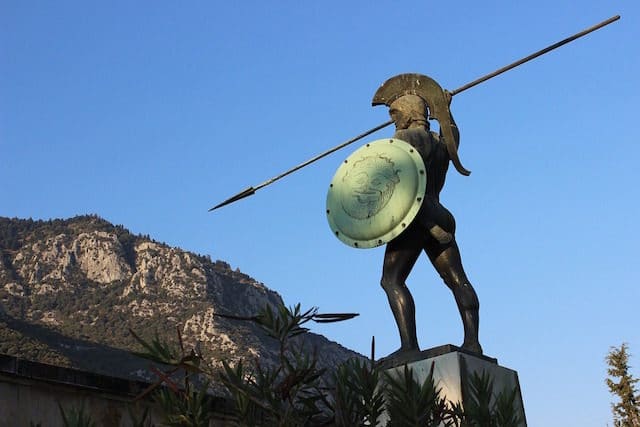
There’s a famous line in the movie 300 when Michael Fassbender’s Stelios is threatened by a Persian, who says their arrows will blot out the sun. Stelios says they’ll fight in the shade. Then, later in the film, the promise is fulfilled and arrows really do blot out the sun.
The movie 300 is based on the true story of the Battle of Thermopylae. But, very obviously, the movie takes numerous liberties with the story. And, truth be told, the history at the time was likely highly embellished. So it’s hard to say for sure what happened at that infamous battle. We can only go by what people said at the time. Or near the time.
The historian Plutarch wrote of the Battle of Thermopylae. The battle took place in 480 BC, while Plutarch was born in 46 AD. So the man didn’t exactly have a firsthand account and learned much of the tale from the writings of Herodotus, who was at least alive at the time of Thermopylae, even if he was only four years old.
Nonetheless, when Plutarch recorded his history later, he remarked that ‘because of the arrows of the barbarians, it is impossible to see the sun.” The joke about fighting in the shade is also included, attributed to Dienekes.
2. Locusts

A swarm of locusts can contain between 40 and 80 million insects. Though generally harmless to humans, they can devore acres of crops in no time and it’s hard to adequately describe how terrifying it must be to face down 80 million finger-sized grasshoppers.
In 1874 (or 1875, depending on what you read), a ravenous swarm of something called Rocky Mountain locusts. The swarm was not that average 80 million strong one. This one lasted for five days, blocked the sun from the sky, and was estimated to contain as many as 10 billion bugs by one account and 120 billion by another.
The swarm covered Montana, Wyoming, Iowa, Colorado, Minnesota, Missouri, Nebraska and more. They ate crops; they ate grass; they ate wool off of sheep and the paint off of fences. There was $200 million in crop damage. They broke into homes and ate any food not sealed in wood or metal. They even ate clothing and bedding.
Despite the ominous nature of the bugs, by the early 1900s, the species had gone extinct.
1. Volcanic Explosions
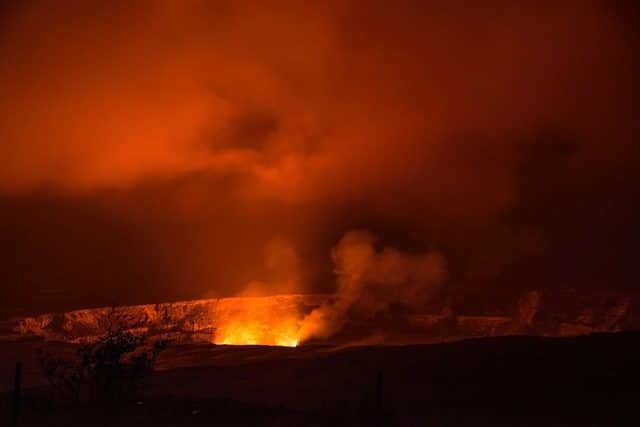
According to some historians, the worst year in the history of mankind was 536. That’s because 536 was the year the sky went dark. And it stayed dark for 18 months. Crops failed, people starved, and the Justinian Plague soon arose, killing somewhere between one third and one half of the population of Europe.
So what made this particular time in the Dark Ages literally dark? Ash. Archeological evidence shows that a volcano in Iceland erupted in early 536. Summer temperatures dropped by as much as 2.5 degrees Celsius. They say it was like an eclipse across the entire northern hemisphere.